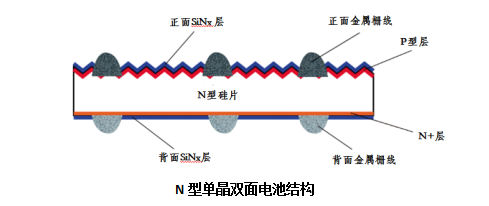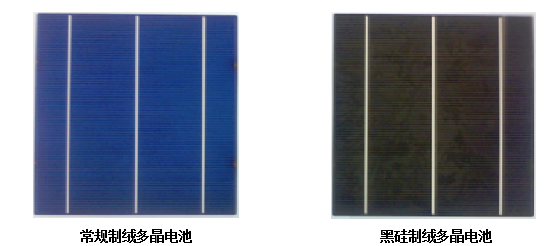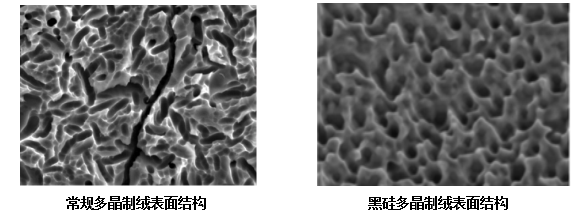Photovoltaic leader plan was launched in 2015. Through this plan, the country has guided the orderly upgrading of the photovoltaic industry. The industry has responded positively and has taken advantage of the trend to accelerate the pace of efficient battery technology from R&D to vector production. After the big wave of the market, the main high-efficiency battery technologies selected by the photovoltaic industry include: polycrystalline silicon black silicon technology, N-type single crystal double-sided battery technology, and P-type single crystal PERC battery technology. The advantages and disadvantages of the above-mentioned technologies are discussed in terms of battery technology, component power, light attenuation, and cracking. One, PERC single crystal battery 1, PERC single crystal single-sided battery The main efficiency range of conventional single crystal batteries is 19.8-20%, and the corresponding component power is 280W. In order to further increase the efficiency of the single crystal battery, a passivation layer is added on the back of the battery. By the action of the backside passivation layer, the surface recombination rate of the battery is significantly reduced, the efficiency of the battery is improved to 20.8-21%, and the corresponding component power is increased from 280W to 290W. Compared with the conventional single-crystal battery process, the PERC single-crystal battery mainly includes three processes of backside passivation, backside SiNx film deposition, and laser drilling. The laser drilling process uses a laser with a certain pulse width to partially cover the passivation layer and the SiNx cover layer on the back of the battery, so that the screen printed aluminum paste can form an effective contact with the silicon chip on the back of the battery, so that the light is generated. Current can be derived through the Al layer. Since the Al paste cannot penetrate the SiNx layer, the rest of the passivation layer that is not removed by the laser is protected by the SiNx cap layer overlying it, which exerts the effect of reducing the surface recombination rate and increasing the efficiency. Generally, the area of ​​the laser opening on the back surface is approximately 5-10% of the surface area of ​​the battery. If the area of ​​the laser opening is too low, the photo-generated current will have a large resistance during the transmission, resulting in a large heat loss and a decrease in the current efficiency. If the laser opening area is too large, the passivation layer cannot effectively reduce the effect of the surface recombination rate, resulting in an inefficient efficiency of the battery. The laser hole opening process produces 5-10% damage on the surface of the cell. As a whole piece of single crystal, PERC single crystal is destroyed due to the complete crystal structure of the backside, and there is a great risk of cracking or crushing. Crystal damage may cause the silicon chip to fragment along the damage. Due to the combination of 2-5mm warping, warpage stress and laser damage caused by the different front and back metal structures of the PERC single crystal battery, the risk of cracking or cracking of the PERC single crystal battery will be significantly improved. After components are applied to photovoltaic power plants, the components need to withstand the tests of mechanical loads or wind loads throughout their entire life cycle. In order to ensure the reliability of the components used in the photovoltaic power plant, the components are required to pass the 5400Pa mechanical load test. The industry standard is that the attenuation of the power of the components after the test is less than 5%, because the damage caused by the laser hole-opening process leads to an increase in the probability of wafer fragmentation. Therefore, the attenuation of the PERC monocrystalline module after mechanical load testing is generally greater than 5%, while the mechanical attenuation of the conventional single polycrystalline module is generally less than 3%. It can be seen that the mechanical load decay rate of the PERC single crystal assembly is significantly higher than that of other component products. For PV power plants, PERC single crystal components gradually cracked and fragmented from the laser opening point under continuous use of snow loads and wind loads, accompanied by a continuous drop in the power of the components. The high mechanical load attenuation rate of the PERC battery in the PERC single crystal module brings about great uncertainty to the power generation of the photovoltaic power plant. In order to alleviate the defects of PERC single crystals in terms of mechanical loads and cracks, the industry adopted a method of adding reinforcement beams to the back of the module, and tried to mitigate the cracks by using thick silicon wafers, but these methods all improved the singleness of the components. The tile cost runs counter to the general direction of reducing the cost of electricity. In terms of photo-induced attenuation, the optical decay of polycrystalline black silicon is about 1.5%. The N-type single crystal has almost no light decay, while the PERC single-crystal light decays between 2-10%, resulting in the use of PERC monocrystalline modules in photovoltaic power plants. It is very likely that the photoelectric conversion efficiency will be greatly reduced, and the power generation and profitability of photovoltaic power stations will drop substantially. 2, PERC single crystal double-sided battery The back side of the PERC single crystal single-sided battery is an all-Al layer, and the back incident light cannot penetrate the entire Al layer. Therefore, only the front surface of the PERC single crystal single-plane battery can absorb incident light and perform photoelectric conversion. In order to make the PERC battery have double-sided photoelectric conversion function, the industry changed the printing process of the PERC battery, and changed the back Al full layer printing process to the backside Al layer printing process. The process is to ensure that the backside Al paste is printed at the laser opening site so that the photocurrent can still be drawn through the Al layer of the laser opening site. The back side of the PERC single crystal double-sided battery is changed from the full Al layer to the local Al layer, so the incident light on the back side can enter the battery from the area not covered by the Al layer, and the double-sided photoelectric conversion function can be realized. Because the laser opening point still needs Al paste to divert the photocurrent, most areas of the back cover Al paste, so the PERC single crystal double-sided battery can absorb on the back compared with the photoelectric conversion efficiency of more than 20% on the front of the battery. The area of ​​light is limited, and the photoelectric conversion efficiency on the back is expected to be 10-15%. At the same time, since the back side is changed from full Al layer to local Al layer, the positive efficiency of the battery may decrease by 0.2-0.5%. Since the PERC single crystal double-sided battery process is not significantly different from the PERC single crystal single-sided battery process, the PERC single crystal double-sided battery is still facing problems such as high cracking rate, high mechanical load attenuation rate, and high photo-induced attenuation rate. . For PV power plants, the use of PERC single-crystal double-sided components still has significant reliability risks, which is a huge test for ensuring the profitability of power plants. Second, N-type single crystal double-sided battery In recent years, N-type single-crystal double-sided batteries have gradually released their production capacity. From the related data, some major domestic companies have certain technical reserves. This battery is also characterized by double-sided absorption of incident light, thereby increasing the power generation of the battery and the assembly. At present, companies have publicized that the positive efficiency of the battery is greater than 21%, and the backside efficiency is greater than 19%. After packaged into modules, the front power is close to 300W, and the back power is close to 270W. In combination with various application scenarios, the power generation of the components is high. Compared with conventional batteries, this type of battery mainly adds double-side paste printing and boron element doping (such as spin coating, high-temperature printing and solid-state source diffusion, etc.) and other processes. At present, most of the product technologies reserved by major domestic companies do not use laser and other processes, so the entire battery manufacturing process does not cause additional damage to the silicon, and the components can maintain stability under various conditions of use. In addition, it also has the characteristics of no photo-induced attenuation, low-light response and so on. The P-type single-crystal cell prints the Ag grid line on the front, and the Al paste is printed on the entire back surface. Therefore, the metal structure and composition on the front and back of the cell are asymmetric. After the screen printing and sintering, the cell will generate 2-5mm warpage. The stress is generated inside the battery. Due to warping and stress, the fragmentation rate of the P type single polycrystalline battery is significantly improved. As a result, battery breakage rates in battery production, component production, and photovoltaic power station components are all increased. The N-type single-crystal double-sided battery is printed with Ag grid lines on the front and back, and the patterns are similar. Therefore, the structure of the N-type single-crystal double-sided battery has symmetry, and the battery does not warp after the screen sintering printing. In addition, there is no laser damage in the process flow of the N-type single-crystal double-sided battery, which maintains a complete crystal structure. Based on the above factors, the fragmentation rate of N-type single-crystal double-sided batteries is even lower. Since N-type single-crystal double-sided battery is printed with silver paste on the front and rear sides, the consumption of the silver paste is higher than that of the P-type single-polycrystalline battery. In terms of capacity, there is still a gap between N-type batteries and P-type batteries. Third, polycrystalline silicon black battery There are several crystals with different crystal orientations in the polysilicon plate, so the widely used monocrystalline NaOH solution anisotropic texturing process is not suitable for polycrystalline texturing. The current polysilicon texturing process is mainly based on the defect etching of HF/HNO3 mixed solution. The reflectivity of the processed silicon wafer is about 18%, which is higher than the reflectivity of 11% after the conventional monocrystalline wool. It is not conducive to the effective absorption of incident light by polycrystalline cells. In order to further reduce the reflectivity of the polycrystalline silicon sheet after texturing, a special texturing process is used to form a nanostructure on the surface of the polycrystalline silicon sheet to increase the absorption of incident light by the effective polycrystalline silicon sheet. The polycrystalline battery produced by this texturing process has a lower reflectance, and the method uses a polycrystalline battery that is visually more darker than a normal polycrystalline battery, so this process is called black silicon pile. The polycrystalline black silicon wool sizing process mainly includes two methods: dry sizing and wet sizing. The dry black silicon texturing process is Reactive Ion Etching (RIE). This method accelerates the impact of the plasma on the silicon wafer under the action of an electric field, and forms a nanostructure on the surface of the silicon wafer, thereby reducing the reflectivity of the polysilicon wafer. . The wet black silicon texturing process is Metal Catalyzed Chemical Etching (MCCE), which attaches metal on the surface of a silicon wafer and etches the surface of the silicon wafer with a mixed solution of HF and a strong oxidant to adhere to the surface of the silicon wafer. The metal deposits downward along with the etching process, thus forming a nanostructure on the surface of the silicon wafer, effectively reducing the reflectivity of the silicon wafer surface. Regardless of dry or wet black silicon sizing process, the efficiency of polycrystalline cells can be increased by more than 0.6%, and the power of components packaged in polycrystalline silicon black cells can also be increased from 265W to 275W. The entire manufacturing process of the polycrystalline black silicon battery is simple and does not cause additional damage to the silicon wafer, so that the polycrystalline module can maintain reliability under various conditions of use, and ensure the stability of the polycrystalline module in the entire life cycle of the photovoltaic power plant. In addition, the polycrystalline cell also has the characteristics of low photo-induced attenuation. The photo-induced attenuation of the polycrystalline cell is generally lower than 1.5%, while the photo-induced attenuation of the PERC monocrystalline cell is 2-10%. It can be seen that the photo-induced decay rate of polycrystalline black silicon is superior to that of PERC monocrystalline cells. In the global crystalline silicon photovoltaic products, polycrystalline products still account for more than 50% of the market demand. Polycrystalline products have the characteristics of low price of single tile, mature technology and high reliability of components, effectively reducing the risk of photovoltaic power plants, and providing reliable protection for the benefits of photovoltaic power plants. Conclusion Polycrystalline black silicon cells and N-type single crystal double-sided cells are significantly better than PERC single crystal cells in terms of photo-induced attenuation rate, fragmentation rate, and mechanical load attenuation rate. Therefore, compared with PERC single-crystal cells, polycrystalline silicon black silicon cells and N-type single crystal cells will bring more stable power generation to photovoltaic power plants, and the investment return of photovoltaic power plant owners can also be better protected. As an investment project that is expected to operate for 25 years, 30 years or even longer, photovoltaic power plants need to pay attention to the stability and attenuation rate of the power of components throughout the entire life cycle of the plant, in addition to the initial power of the components, in order to ensure a stable return on investment. Smart Downlight,Wifi Smart Light Bulb,Led Smart Emergency Bulb,Smart Emergency Bulb JIANGMEN MOSCOT OPTOELECTRONIC TECHNOLOGY CO.,LTD. , https://www.zjsensorsled.com






